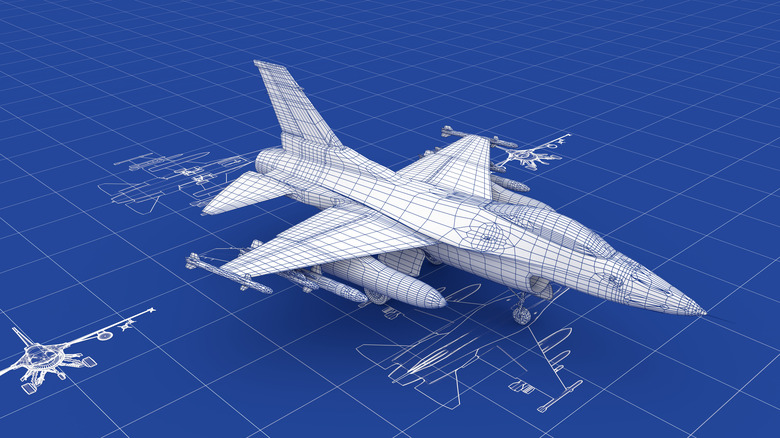Here's What We Could Expect From The 7th Generation Of Fighter Jets
It's interesting to consider the "generation" classification for fighter jets because before the existence of the F-35, it wasn't something the government or contractors used. It was a marketing ploy devised by Lockheed Martin that happened to gain traction and become part of the generally accepted lexicon amongst the public. Now, combat aircraft of the past have been shoehorned into official generation classifications. The most advanced fighter jets of modern times like the F-22 Raptor and F-35 Lightning II are part of the fifth generation with sixth gen fighters still in development not expected to be delivered until the 2030s.
So we're a ways off — likely decades — before details for seventh generation jets are even official. Not that there aren't engineers or defense contractors already thinking up what a seventh gen jet might entail. It's never too early to start speculating the possibilities for next-generation technology. According to Gareth Jennings, aviation editor at Janes (via National Interest), "It is possible to look at the progression of previous generations and extrapolate that forward to take an educated stab at what might be features in a 7th generation jet."
A seventh gen fighter will undoubtedly be more advanced than the Raptor or Lightning II, which potentially means better stealth capabilities, avionics, and an advanced heads-up-display (HUD). Let's speculate what a seventh generation fighter jet might be capable of together.
The advanced technologies for 7th gen fighter jets
F-35 pilots are outfitted with a unique helmet to improve their combat capabilities. It's likely that such technology will become mainstream for all fighter pilots down the road with future fighter jets. Physical instruments in the plane could be scaled back to reduce weight, improving speed and maneuverability. All pertinent data could be transmitted to the pilot's helmet. Artificial Intelligence is seeing a significant push in multiple sectors, including defense. It's likely that by the time aircraft technology gets to the seventh generation, AI will be perfected to, if not already, be integrated with future advanced helmets.
The most impactful features that define the fifth gen jets are their small radar cross-sections, sensor fusion, and the ability to retain supersonic speeds without using the afterburner. Sixth gen fighters will build on those features, and seventh gen on top of whatever those jets bring to the table. It's likely that the fighter jets of the future will remove the pilot completely. There are programs like the Collaborative Combat Aircraft (CCA) project that aims to build a completely automated drone to fly alongside manned fighters.
General Atomics has been selected to design a CCA that will fly with sixth gen fighters. By the time the United States military starts flying seventh gen jets, there could be an AI-powered automated jet capable of flying regular combat missions, removing pilots from the equation completely.
Seventh generation programs might be joint effort
What would be the cost of something so advanced? The F-35 program on its own has proven how expensive next-generation technology could be, costing trillions of dollars over its lifespan. So a seventh generation fighter, whether autonomous or not, couldn't be cheaper than an F-35, could it? While it's possible to manufacture more advanced fighter jets for less than the F-35, there are solutions to mitigate expenses.
Britain, Japan, and Italy all made an agreement in 2023 to collaborate on a next-generation fighter jet program with British defense minister Grant Shapps telling Reuters, "No nation can do this alone to this level of expertise combined with our skills and our equipment, with our design and ability on production lines." Not only could working alongside allied nations to produce a next-generation fighter jet help keep costs down, but it would also bring together the greatest minds the defense sector has to offer.
When focus is aimed at seventh generation fighter jets, developers will have to look at what made fifth and sixth gen jets work and also what didn't work. A concerted effort will help in many ways, but there are also security concerns. The U.S. doesn't export the F-22 to keep certain secrets close to its chest and while some countries might be allies today, that can change after a few poorly executed diplomatic negotiations or a change in values.


